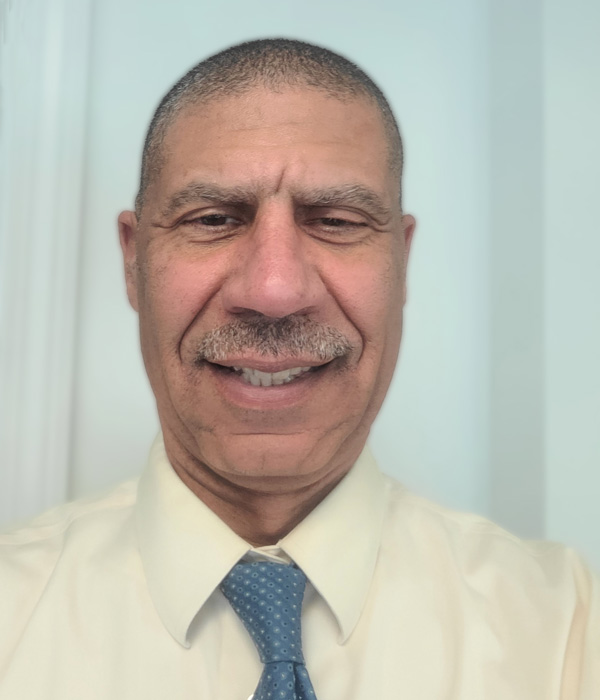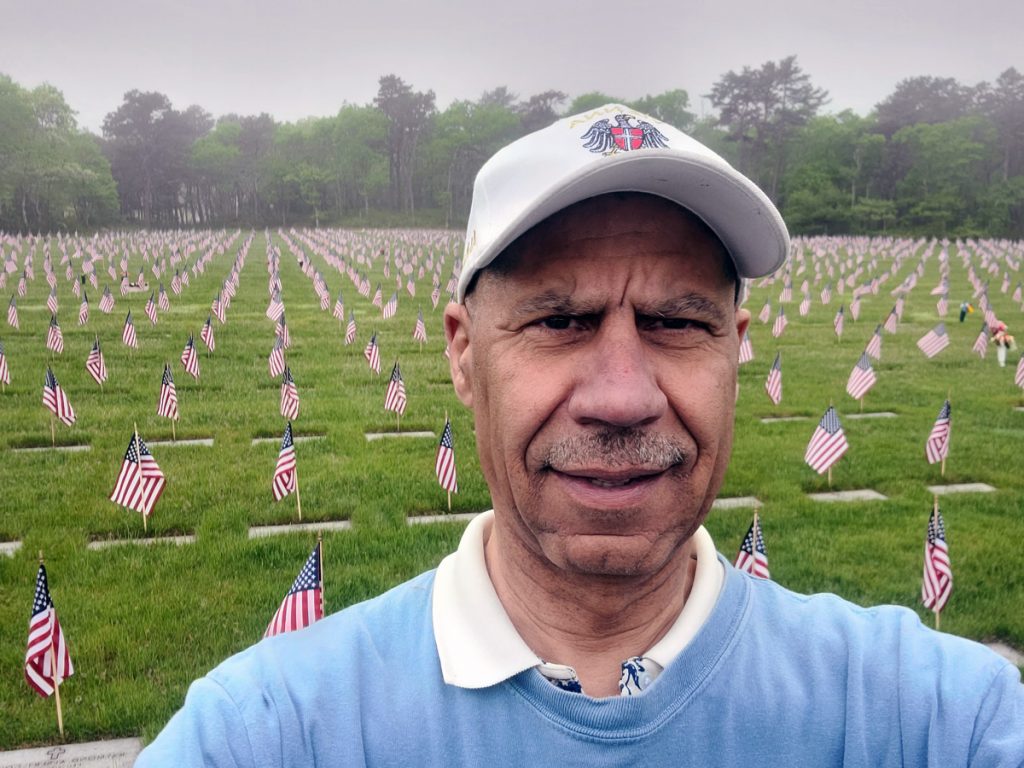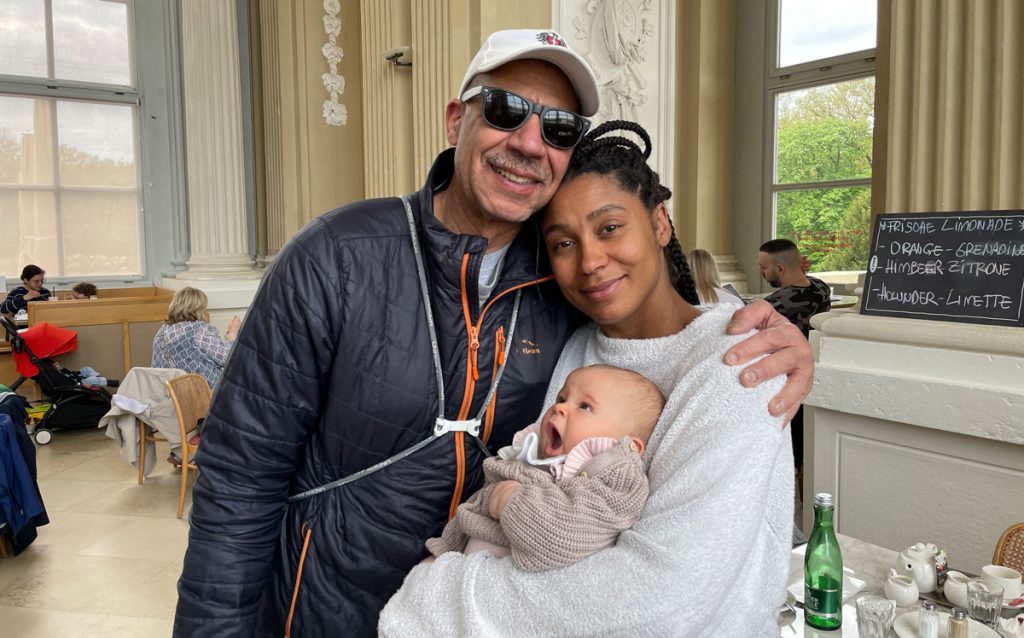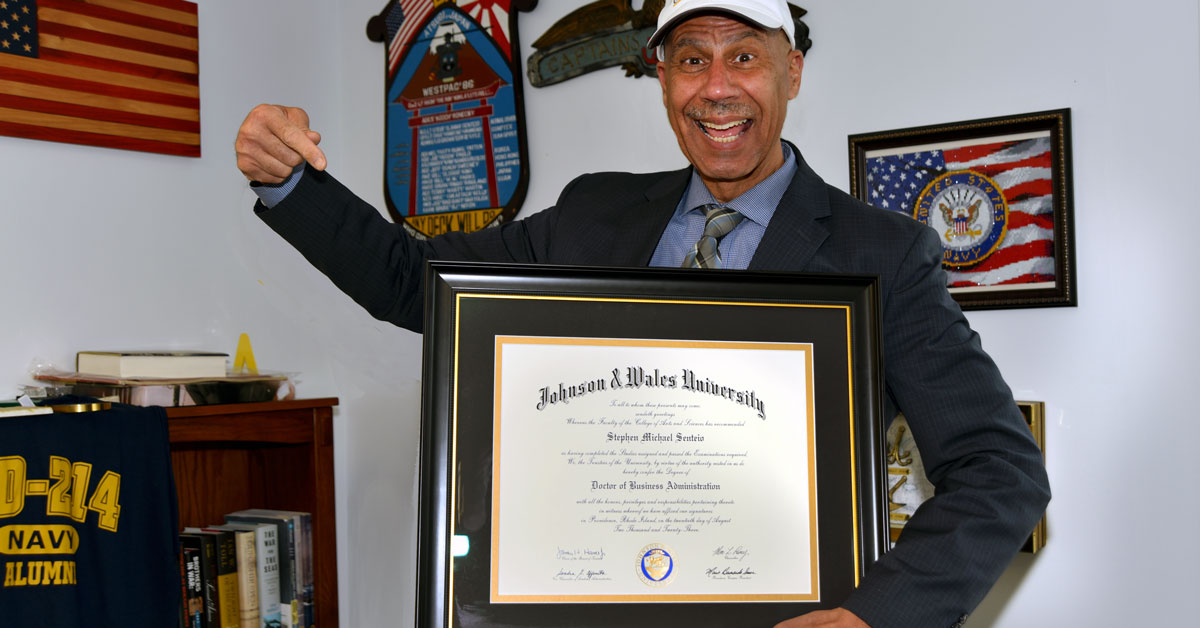Stephen Senteio chose JWU’s online Doctor of Business Administration program in preference to pursuing a PhD, because an integral part of the DBA is a lock-step dissertation process in which he could produce research that applied to his business challenges as a financial advisor. According to his dissertation advisor, Dr. Larry Hughes, the research topic Steve chose was unique to his discipline and to the program.
Thrilled to be earning the DBA, Steve didn’t initially believe his work would be good enough to submit to a journal. “Without Dr. Hughes’ consistent encouragement and belief in me, I likely would not have taken the initiative to submit an article.” Steve shares his story about collaborating with Dr. Hughes, to publish his first article, “Customer Trust and Satisfaction with Robo-Advisor Services,” in the Journal of Financial Planning.
Why I Chose JWU’s Online Degree Program

Financial planning is my second career; for 30 years I served as a naval officer and aviator in the U.S. Navy. My background is in mechanical engineering. I hadn’t thought about starting a financial career until, at the end of my military career, a friend suggested it to me. The flexibility and autonomy that working as a financial advisor offers was attractive. After some informational interviewing to learn what a financial advisor does, I interviewed for open positions with various companies. Now after almost 13 years in the financial field, I continue to enjoy the work.
After earning the Certified Financial Planner™ designation in 2019, I wanted to continue my professional education and embrace the challenge of becoming a lifelong learner. I began searching online for advanced degree programs and determined that a doctoral program, with its extensive research requirements, was best for me. As a working professional, the flexibility of JWU’s online DBA program, with its asynchronous classes, seemed a perfect fit with the hours I needed to be in the office.
Initially skeptical about how someone could learn online compared with in a classroom, once in the program, I recognized that the professors teach you how to educate yourself. I’ve always been a self-learner, so that made sense to me. After I figured that out, it was ‘Wow! Boy did I learn!’
Planning, Researching and Writing the Dissertation
At orientation and in the first classes, the professors in the DBA program gave us great advice — choose a dissertation topic early and apply it to our assignments throughout our courses.
I had thoughts about what I might research but none that excited me. Dr. Julie Bilodeau, Dr. Scott Smith, and my DBA dissertation advisor, Dr. Hughes, told us, “The key to a successful (and a little less stressful) dissertation experience is to identify a topic of passion early in the program and then leverage the coursework to build out a concept and literature basis.”
I considered a topic on investing overseas but realized it wasn’t feasible to find research material and gather data outside the states. A fan of technology, I considered a topic involving robo-advisors, because of the nexus between technology and finance.
The robo-advisor topic was fresh and new and had a technology component.I could pair technology with the financial component that relates to what I do at work. Entitled, “Customer Trust and Satisfaction with Robo-Advisor Services,” the topic fully embraced my passion for robo-advising.
I bounced the idea off of Professor Scott Smith, who thought it sounded promising. Once I settled on the topic, I scoured the existing literature. Finding that there wasn’t a lot written made the topic even more exciting. During my dissertation year, artificial intelligence had just started to take off, so I had inadvertently stumbled into a cutting-edge research area. At every opportunity, during the three years of the program, I wove the robo-advisor topic into research assignments in all of my courses.
Documenting my literature review with information gathered over a couple of years was challenging.
Early in the program, I struggled to ensure each statement of fact I wrote in a paper was supported by a reference. It was a grind, but also exciting to be exploring robo-advisor technology and artificial intelligence. The research experience has been incredibly valuable. Now I know where to look for credible information and am able to discern good quality research from less reliable sources.
Another big challenge was getting enough people to respond to the dissertation survey questionnaire. My survey was on LinkedIn but getting people to respond required many LinkedIn emails, which I continually sent out over a two-and-a-half-month period.
How a Robo-Advisor Works in Financial Planning
As a financial advisor, I provide tailored guidance to serious long-term investors on financial planning, investment management, retirement strategies and risk management. I help clients set realistic goals and then monitor the planning process so that our clients’ finances stay on track and achieve their goals. I partner with my clients’ CPA and attorney to ensure clients remain tax efficient and have an estate plan.
Additionally, I provide behavioral coaching to help clients make informed, disciplined decisions, particularly during market fluctuations, which ensures a comprehensive approach to achieving long-term financial security and a secure and dignified retirement.
In comparison, Robo-advisers are algorithm-based digital tools that provide customers with automated financial advice without human intervention. They may or may not use artificial intelligence. At the time I was conducting the research, it seemed like only a minority of robo-devices used AI.
Some robo-devices may have employed AI during the onboarding process to help gather data and develop a profile, but AI may not have been used to manage the money. Even for people who have experience, it is difficult to know which robo-advisors use AI. So much is proprietary that the information is not necessarily accessible, except to the people working on that system.
I view robo-advising as augmenting — not replacing — customer service, while helping companies meet a broader range of financial planning needs in preference to providing everyone the same level of service. It is a great tool for a young person who wants to invest some money and make it grow but isn’t interested yet in retirement or wills or estate planning.
Someone in their forties or fifties is likely to have more complex needs. They may want to save a little bit more money on taxes and could benefit from a Roth, IRA, or a retirement program. A couple in that age range may want to know if they can afford to buy their second home. Clients with more complicated issues may require a different level of service, such as the ones I provide.
The number one core value of the firm I am employed by is acting in the best interest of our clients —they always come first. Provided that clients are invested properly, a robo-advisor may be perfectly suited for their immediate needs.
JWU Faculty and Advisors
The DBA dissertation committee includes a Major Advisor (Chair), a Second Reader, a DBA Program Methodologist – and if requested by the student, an additional reader. My DBA professors were incredible, from the leadership of Dr. Julie Bilodeau through all the professors including, Dr. Scott Smith, Dr. David Hood, Dr. Stacey Kite, Dr. John Krupa, Dr. Martin Sivula, Dr. Michelle Rego, Dr. Paul Boyd, Dr. Letta Campbell, and Dr. Hughes. Each one of these professors taught at least one course in the DBA program. They were all great cheerleaders.
My dissertation defense committee of Dr. Hughes, Dr. Julie Bilodeau, Dr. Michelle Rego, and Dr. David Hood was phenomenal in their support and in helping me make the dissertation a better product.
During the nearly seven months in the dissertation phase, Dr. Hughes and I met weekly for 15-minute calls. A great mentor, colleague and brother, his enthusiasm and passion kept me motivated throughout the dissertation year. He helped me keep it simple so that I didn’t go down too many rabbit holes.

The Experimental Design — What Worked, What Didn’t
Dr. Hughes and I collaborated on the experimental study design, which employs an explanatory mixed-methods methodology that integrates qualitative and quantitative data to increase understanding about the topic. We collected quantitative data first and then followed with qualitative data collection.
Quantitative data was gathered using a questionnaire uploaded to LinkedIn and targeted to working professionals in the United States. We set up a model in which respondents were randomly assigned either to a robo-adviser experimental group or a human financial adviser control group. The two groups answered comparable questions. From a scientific point of view, having a control (the human advisor group) and a comparison (the robo-advisor group) made analyzing the data more scientific and reliable, because an experimental study is more credible than an opinion survey.
Vignettes are a data collection technique used in research studies to elicit subjects’ knowledge, attitudes or opinions according to how people believe they would behave in the hypothetical situation described in the survey. We gave one group the scenario, “you’re being invested by a Robo Advisor Company” and gave the other group the scenario, “You’re being invested by a financial advisor named “Pam.”
The survey design leveraged a vignette technique to simulate real events.
People can imagine, ‘Hey, my money is being invested by a robo-advisor,’ or ‘my money is being invested by a real person.’ I found that simulating situations in a study is a powerful way to collect data.
There were eighty-six (n = 86) total respondents that completed the 40-item survey. The 40-item survey measured eight variables, four of which were used in this study: reputation (of the financial organization), information quality, service quality, and attitude toward AI.
The qualitative portion of the study consisted of a 15-to-30-minute semi-structured interview conducted via the Zoom video conferencing application. Ten (n = 10) participants volunteered at the completion of the quantitative survey to take part in the interviews.
Initially I wanted to ask the survey subjects four or five questions that could be tallied up to get a score related to risk tolerance — conservative, moderate or progressive. People may think they know where they fall on the risk aversion scale and want to be aggressive because they desire making lots of money. You need to ask probing questions like, ‘How would you react if the market dropped by 20% and you lost $200,000 from your million-dollar portfolio? That happened in 2008. How clients answer that question is essential to assessing their risk tolerance.
I tried for weeks to figure out how I could ask four questions and add them up, so that the survey would be more interactive. I quickly learned that simpler is better in a survey. In the end I asked just one question related to risk tolerance, and then inferred from that what their actual portfolio should be.
The toughest part of the research process was getting enough responses to the survey.
Initially Dr. Hughes and I put the survey on his LinkedIn profile and invited responses from his network of LinkedIn associates. Then I read a study in which a LinkedIn service was used to solicit surveys.
LinkedIn has an upgraded service that is similar to a sales navigator; it allows you to send InMail (internal emails). I picked a group of people, as randomly as is possible, in different geographic areas in the United States. I sent InMail requests, asking that recipients please take the survey. Sending out InMail every day for a couple of months, until reaching over 3,000 people, was a painstaking process.
The survey I posted to LinkedIn was open to any non-financial professional in the United States. I excluded financial professionals because we wanted unbiased responses – and financial professionals may have had concerns about robo-advisors threatening their positions. I wanted to prevent anyone in the financial field, who had any prior knowledge of robo-advising, from skewing the data.
Dr. Hughes estimated we needed about 120 survey samples; we received 86 responses.
Although the number of responses was below the threshold that we originally thought we needed, the data proved to be statistically normal and reliable.
Later I recognized that the LinkedIn Sales Navigator was linked to my firm, so anyone receiving my email saw me as a financial advisor. I suspected that people who received my request would likely think, ‘This guy’s trying to sell me something.’ In retrospect, I believe this may have dissuaded people from responding.
When, at the end of their survey, we invited respondents to participate in an interview, my theory was confirmed. During my phone call with one woman in Florida who had agreed to be interviewed, she commented, ‘Yeah, I wondered if you were going to try to sell me something.’ She was relieved when I explained that I was doing research for my DBA degree. ‘Bingo!’ I thought. If I had sent InMail from, for example, from JWU as an academic institution, possibly more people would have answered the survey.
Initially I believed that you have to spend millions of dollars to (design) a simulation. Finding examples that showed me it is possible to do simple simulations — ‘I am a robo-advisor’ or ‘I am a human advisor’ — made me feel good about how I set up this experiment.
Defending the Dissertation
The DBA handbook provided a good blueprint for how to prepare for the defense. I followed that guide and then practiced my presentation with Dr. Hughes before the actual defense date. I am grateful to my dissertation committee for giving me rapid, valuable and concise feedback as I handed in each chapter.
During the dissertation defense, there were minor things I was asked to revise. One of my dissertation team members wanted me to add a couple of bullets about future research ― for example, how I might look at a specific result in my study. Within a week, I sent my responses back to the committee and it sailed through.
Distilling the Essence of the Dissertation
Following the dissertation defense, I began working on a submission for the Journal of Finance. I chose to condense the 213-page dissertation including the literature review, methodology and results, to the specified maximum of 60 pages — the shorter the article, the harder it is to include the essential information.
Dr. Hughes and I submitted the article together as co-authors.
I packaged it with a check and sent it to the journal. The editor took a quick look and contacted me saying, ‘Thank you very much, but we don’t think we want to publish this and want to save you the money.’ They sent back my $250 check. I asked for feedback and suggestions on how to improve the article but received no reply.
Without their feedback, I can only speculate about why the article was rejected. Possibly the Journal of Finance favors a heavily quantitative approach, with equations and graphs. My study emphasized qualitative, together with quantitative, data — extending into areas like algorithms and machine learning which they may not have felt was a match for their readership.
Once we received the rejection, we began preparing a shorter submission for a different publication, The Journal of Financial Planning. The article made it through their first review, then the peer review, and after a few more iterations the article made the final cut and was accepted for publication.
It was extremely challenging to edit a 213-page dissertation down to a 15-page journal article!
I had to boil it down to the most important parts by cutting out other parts I hoped would not affect the meaning. The process forced me to focus on what I most wanted readers to get out of the article.
I would ask myself, ‘Am I capturing everything? Do I have all the data that I need to support the result? Will everyone reading this understand it?’
The Journal of Financial Planning is less academic and more applied research. So, I think my article fit better with their emphasis on practicality — and that they appreciated the new, exciting topic. I encourage anyone who wants to publish their findings that while one journal might not find the article the right fit for their readership, another journal may welcome it.
Distilling the essence of the dissertation infused life into the topic and made it more readable. Few, if any people, would have searched for and found my paper on the JWU DBA dissertation list, unless specifically researching the robo-advisor topic. No layperson would have read it. Because the article is published, financial professionals, people in other industries with an interest in robo-advising – even those who just want to learn about their options for investing – can access it.

Future Research
If I can muster the expertise needed, I’d like to conduct another study to explore the incorporation of machine learning into the robo-advisor, and test whether it is even feasible. Machine learning would need to become a little bit more sophisticated about selecting investments to make it practical.
After that, I might want to explore whether deep learning — a type of machine learning that uses artificial neural networks – could be applied to a robo-advisor and see what problems that could solve. These studies would be extensions of what I did for my dissertation.
Finally, I would conduct the survey by sending InMail from a LinkedIn profile not connected to my firm’s LinkedIn. I might pay the $3,000 for LinkedIn’s service or apply for a grant to purchase a list of people, so that getting hundreds of respondents would be easier.
Life-long Learning
Earning a doctorate is the ultimate academic achievement. I display JWU’s DBA diploma proudly in my office. Now I’m on fire — the challenge to be a life-long learner has only just begun.
While I expect I’ll be a financial advisor until I retire, I intend to become an AI financial researcher and possibly a consultant — and hopefully to contribute to society. I have already started the process of becoming an adjunct professor for JWU.
Researching and writing a dissertation has been a great learning experience, from which I have grown tremendously. More than just earning the degree, you build character and resiliency. The DBA program prepares you to more easily deal with complex business problems and to navigate through uncertainty without becoming overwhelmed. You become a better person and a better leader.
If you are looking for an advanced degree in business, earning the online DBA degree online is extremely effective and efficient. Every professor at JWU has been helpful — they want you to succeed. I am deeply grateful to have stumbled upon the DBA program and for the support to earn my degree. JWU’s online Doctor of Business Administration degree program is a hidden treasure!
All of us at JWU Online would like to congratulate Stephen Senteio on successfully defending his dissertation and having his work published in The Journal of Financial Planning.
